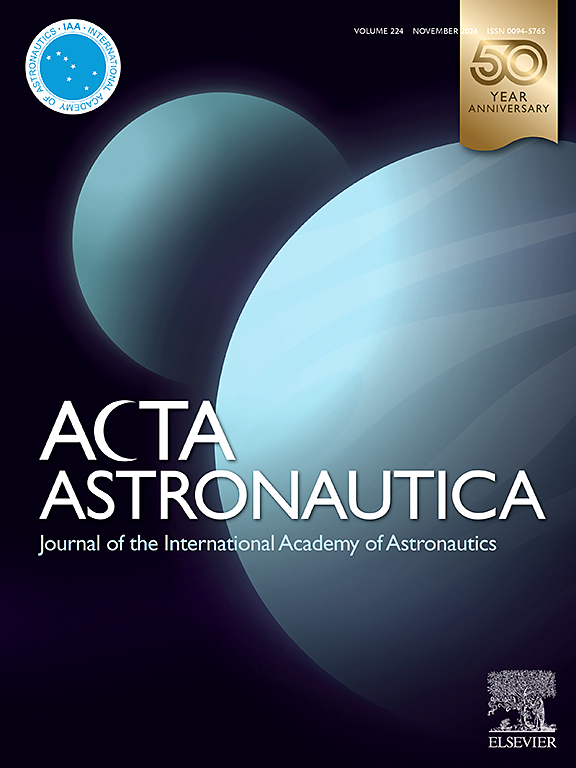Constraint-integrated inverse kinematics method for dual-arm motion
IF 3.1
2区 物理与天体物理
Q1 ENGINEERING, AEROSPACE
引用次数: 0
Abstract
Dual-arm motion is a critical capability for a multi-branch space robot in on-orbit missions. To address on-orbit motion challenges specific to SRS branch configurations, a constraint-integrated inverse kinematics (CIIK) method is proposed. This method employs joint points to equivalently represent the redundant spatial robot, which comprises dual arms and a torso. An analytical expression for the inverse kinematics is derived, ensuring both accuracy and computational efficiency in the solution. Constraints are imposed on the torso through spatial vectors to mitigate the impact of constraint computations on the efficiency of inverse kinematics solutions. Furthermore, a mapping method between joint points and joint angles is proposed, which can obtain effective and smooth joint angles during continuous motion. By comparing with widely adopted inverse kinematics methods, CIIK demonstrates superior performance in terms of computational efficiency, solve rate, and joint angle continuity under unconstrained mode. Simulations and physical experiments were conducted by applying constraints to the torso. The results indicate that CIIK does not increase computation time and exhibits good solving performance in constrained mode.
求助全文
约1分钟内获得全文
求助全文
来源期刊

Acta Astronautica
工程技术-工程:宇航
CiteScore
7.20
自引率
22.90%
发文量
599
审稿时长
53 days
期刊介绍:
Acta Astronautica is sponsored by the International Academy of Astronautics. Content is based on original contributions in all fields of basic, engineering, life and social space sciences and of space technology related to:
The peaceful scientific exploration of space,
Its exploitation for human welfare and progress,
Conception, design, development and operation of space-borne and Earth-based systems,
In addition to regular issues, the journal publishes selected proceedings of the annual International Astronautical Congress (IAC), transactions of the IAA and special issues on topics of current interest, such as microgravity, space station technology, geostationary orbits, and space economics. Other subject areas include satellite technology, space transportation and communications, space energy, power and propulsion, astrodynamics, extraterrestrial intelligence and Earth observations.
 求助内容:
求助内容: 应助结果提醒方式:
应助结果提醒方式:


